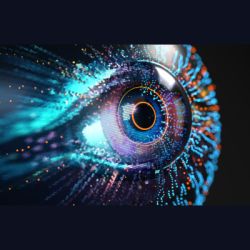A team of Google scientists has unveiled a groundbreaking machine-learning tool named Health Acoustic Representations (HeAR) designed to detect and monitor various health conditions by analysing sounds like coughing and breathing. This innovative artificial intelligence (AI) system, trained on an extensive dataset comprising millions of human audio clips, has the potential to assist physicians in diagnosing diseases such as COVID-19 and tuberculosis, as well as evaluating lung function. While the idea of using sound as a biomarker for disease is not entirely new, it gained significant attention during the COVID-19 pandemic when researchers found that the disease could be detected through a person's cough. However, what sets HeAR apart is its vast and diverse training data and its capability to be fine-tuned for multiple tasks. This extensive dataset allows the system to generalise its findings effectively.
Innovative Training: How Google's HeAR Learns from Unlabeled Sound Clips
The Google researchers employed a unique approach called self-supervised learning for training HeAR, which differs from the conventional supervised learning method commonly used in medical AI tools. Instead of relying on labelled data paired with specific health information, the team extracted over 300 million unlabelled sound clips from publicly available YouTube videos. These clips, which included coughing, breathing, and throat-clearing sounds, were transformed into visual sound representations known as spectrograms. The researchers then used these spectrograms to train the model to predict missing segments, similar to how language models like ChatGPT predict the next word in a sentence.
Adaptability and Performance: HeAR's Versatility in Disease Detection
One of the key advantages of HeAR is its adaptability. The researchers were able to fine-tune the model to detect COVID-19, tuberculosis, and even characteristics such as smoking habits by providing it with limited labelled datasets for these conditions. In tests, HeAR demonstrated promising performance, scoring 0.645 and 0.710 for COVID-19 detection and 0.739 for tuberculosis detection on a predictive scale where 1 indicates perfect accuracy and 0.5 represents random guessing. These scores outperformed existing models trained on speech or general audio data. The diversity of the original training data, which encompassed a wide range of sound qualities and human sources, contributes to the generalizability of HeAR's results, according to the researchers. This diversity provides confidence in the tool's reliability and applicability across various populations and conditions.
Industry response: engineers and laryngologists praise “audiomics” potential
Ali Imran, an engineer from the University of Oklahoma, highlighted the significance of Google's research, emphasizing the confidence instilled by the sheer volume of data used. Imran's team is developing an app called AI4COVID-19, which aims to differentiate COVID-19 coughs from other types of coughs. They plan to seek approval from the US Food and Drug Administration (FDA) for their app and are currently seeking funding for clinical trials. As of now, there is no FDA-approved tool that diagnoses diseases through sound analysis. Yael Bensoussan, a laryngologist from the University of South Florida, commented on the promising potential of the field of health acoustics, also known as 'audiomics.' She co-leads a research consortium focused on exploring voice as a biomarker for health monitoring. Bensoussan emphasised the non-invasive nature and low resource requirements of voice-based monitoring methods, highlighting their potential for both diagnosis and regular screening.
The development of HeAR by Google represents a significant advancement in the field of health monitoring and diagnostics. By leveraging AI and machine learning technologies, researchers are harnessing the power of sound to detect and monitor various health conditions in a non-invasive and resource-efficient manner. While the tool is still in the research phase and its commercial availability remains uncertain, it holds great promise for revolutionising healthcare practices and improving patient outcomes in the future.
Source: Nature
Image Credit: iStock
























